The 10 Best Beachside Climbing Destinations

There is something so alluring about a place where the rock meets the sea, a juxtaposition of the vertical cliffs against the horizontal ocean that makes climbing here a unique experience. Throw in the salt air and the waves lapping against the shore, plus the typically lush, hardy vegetation at sea level, and it can feel like you’re on another planet, with the infinite waters providing a backdrop like no other.
Seaside climbing becomes an even richer experience with a beach right under you—like, belaying on sand and taking a dip after climbing—or so close by that it’s part of the experience. Basically, climbing on the beach is the vacation climber’s dream, with opportunities to push yourself up on the wall and then chill out in the surf. The only bummer about beachside climbing is the conditions: It’s often muggy and humid, with salt, sea spray, and condensation clinging to the cliffs. Still, if you’re willing to occasionally lower the performance bar, you’ll have a grand old time and get the beachside, FOMO-inducing climbing photos of a lifetime.
Here, without further ado, the world’s 10 best beachside climbing destinations. These are areas selected because they combine stellar or fun rock climbs with oceanside lounging and swimming of the highest caliber.
Cala Gonone, Cala Fuili, and Cala Luna, Sardinia
Situated on the eastern coast of the rocky Mediterranean isle of Sardinia is the town of Cala Gonone, at the bottom of a steep switchbacking road that snakes through numerous limestone crags down to waters so blue-green and clear they look Photoshopped. The town is postcard-perfect, with classic red-slate rooftops, narrow streets, trattorie, gelato shops, and lodging options aplenty.
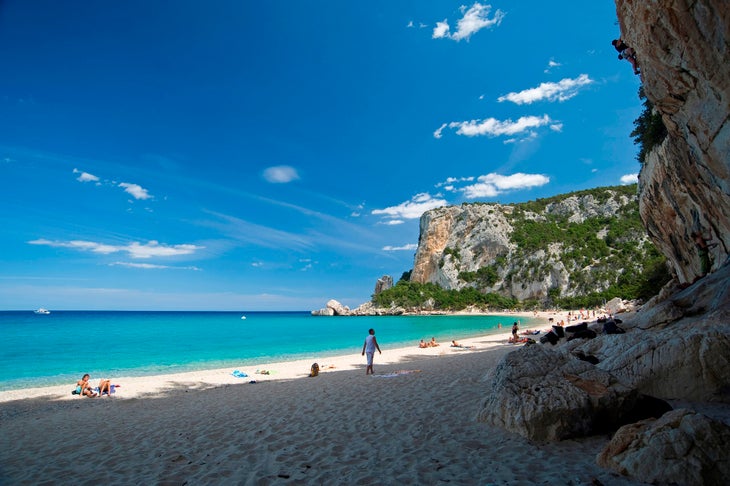
Cala Gonone is the island’s hub for seaside cragging, with access to multiple crags, including the beachside areas of Cala Fuili and Bidiriscottai by town, and—with some hiking or a boat ride—the sandy-floored cave and walls at Cala Luna down the wild coastline. Also along this same stretch of Sardinia is the legendary seaside needle of Baunei, at Cala Goloritzé, which features six- and seven-pitch routes up to 5.12a to an exposed, rocket-tip summit. Locals have slowly been updating the area’s climbs, some of which date back to the 1980s and 1990s, with titanium glue-ins, but beware any rusted non-titanium hardware—it won’t be trustworthy.
Cova Del Diablo, Mallorca
We would be remiss not to include at least one deep-water soloing (DWS) area in this list of best “beachside” climbing areas, even though, in this case, the “beach” is more of a mindset. The Big Daddy of all DWS areas is Cova del Diablo, at Porto Cristo on the east coast of Mallorca. This streaked, tan-and-orange limestone wall towers an intimidating 55 feet above the Mediterranean’s clear green waters, with huge, widely spaced pockets and huecos, resulting in legendary jump moves, like the all-points-off dyno on Loskot and Two Smoking Barrels (5.13c).
Mallorca is the birthplace of DWS. Back in the 1980s, the late local climber Miguel Riera and friends would do highballs (psicoblocs—“psycho” + “blocks,” or boulder problems) over the ocean during the hot summer months, cooling off with a plunge into the sea. Slowly, the problems got higher, until around the turn of the millennium, Riera introduced top climbers like Neil Gresham, Mike Robertson, and Klem Loskot to the Cova, resulting in a first-ascent frenzy. This area is best visited in September and October, as the rock can be hot and slimy in summer.
Discovery Bay, Jamaica
A gem of an area in the balmy Caribbean is Discovery Bay, on the north shore of Jamaica, with 55 (and counting) limestone climbs right above the Northern Coastal Highway, overlooking the sea and with easy access to nearby Puerto Seco beach, where you can swim with the dolphins in Dolphin Cove. (You get a “handshake” and a “hug” as part of the experience—more than you’ll get on a bad day from a grumpy climbing partner!)

Roped climbing on Jamaica got its start at Discovery, with four climbs at the CEAP sector first installed in 2017 by Daniel Oury, from Spain, who showed the area to fellow Spanish transplant Juan Luis Toribio, who took the baton starting in 2021, firing in dozens more climbs from 5.8 to 5.13. The other two areas at Discovery are Eden and the Snake Pit. All three sectors sit in lush jungle overlooking the sea, and together they host routes on features ranging from stalactite-dripping caves to razorblade slabs. Toribio runs an Instagram account dedicated to creating a local community of climbers amongst the Jamaicans as well as with visitors and offers free climbing instruction to anyone interested.
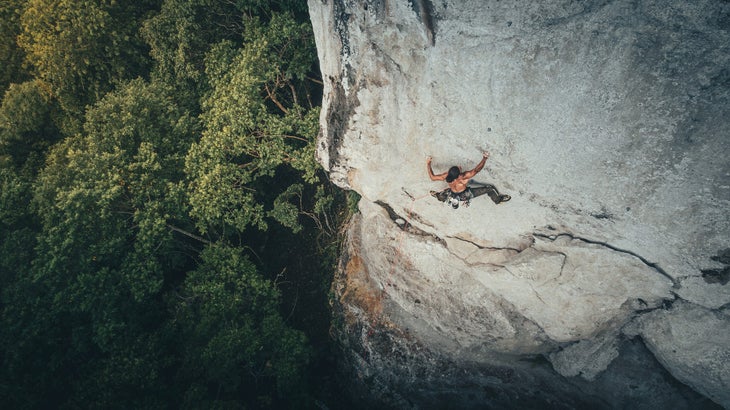
Dixon’s Wall, Cayman Brac
Located on Spot Bay on the northeastern tip of tiny Cayman Brac, Dixon’s Wall is a little slice of world-class, Euro-quality limestone set amidst palm trees and equatorial jungle just steps from the Caribbean Sea and the Brac’s many empty beaches. This gently to radically overhanging swell is home to 20-odd routes, from 5.10 to 5.13b, on tufas, pockets, flanges, and bulges that would be right at home in Spain.
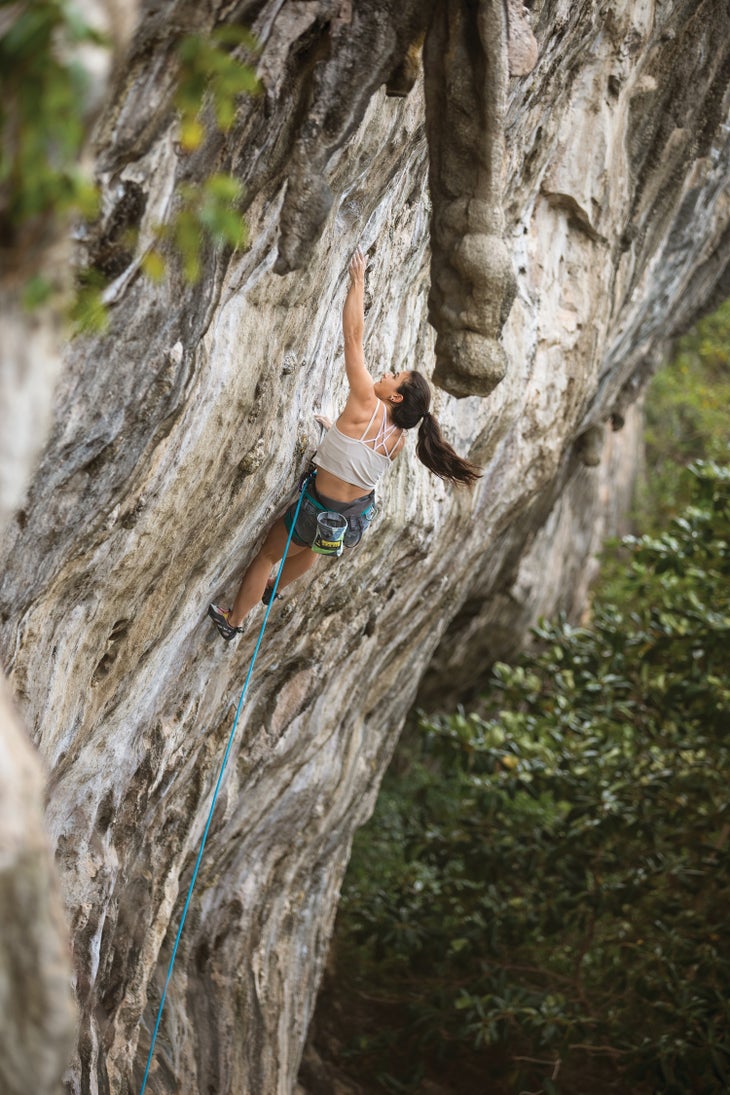
Unlike nearby Grand Cayman, the Brac is not a touristy island, and is typically only visited by divers and climbers; it doesn’t have Grand Cayman’s cruise ships and giga-resorts, nor nearly as many sandy beaches, largely because the island is basically an above-ground limestone reef that’s 12 miles long and one mile wide. Still, there are some great beaches, including snorkeling-friendly options along the coastal road to Dixon’s, and the picturesque “Public Beach” on the southern coast, where friends and I once spent an entire afternoon without seeing another soul, save a few errant chickens.

Read our place profile of Cayman Brac here.
Playa Frontón, Dominican Republic
This remote, idyllic palm-tree beach on the tip of the Samaná Peninsula in the northeast Dominican Republic provides an unforgettable seaside climbing adventure—and, best of all, most routes have been equipped with titanium glue-ins that are safe in the maritime environment. The area breaks down into seven distinct sectors along a two-mile cliffband. Frontón Beach’s Main Wall is the primary beachside option and home to the über-photogenic 5.12d Me Gustaria Verte Otra Vez, on marbleized black limestone. The nearby Sector Paraiso is also not to be missed, with 30-meter pitches on streaked rock ranging from 5.7 to 5.12.
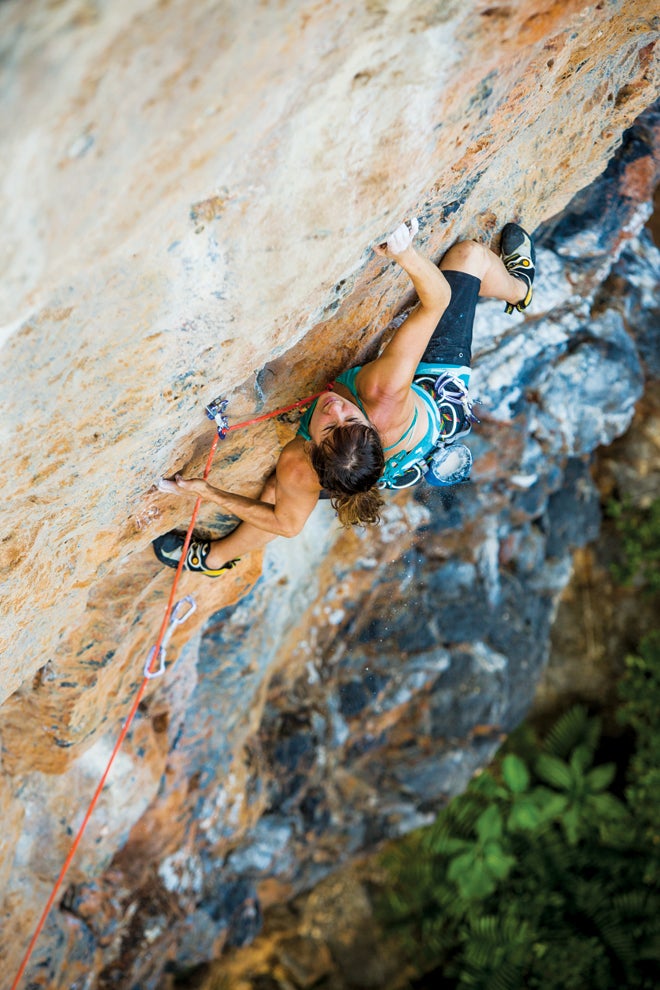
The three cliffs right at Playa Frontón can be reached one of three ways: a 15-minute boat ride from the town of Las Galeras (best option), a two-hour round trip hike from the blowhole at Boca del Diablo, or a four-hour round-trip hike (brutal!) from Las Galeras. If you hike, bring ample food and water, and, per the writeup on Mountain Project, “… hike with a large group or hire a guide/guard to accompany you, as there have been reports of trail robbings….” If this all sounds like too much, the more accessible cliffs at Sector Jerry, Genesis Walls, Contra Wall, and Cueva de Agua are 10 minutes or less from the road.
Praia da Ursa, Portugal
The Portuguese coastline has become famous for the epic surf spot of Nazaré, with its skyscraper-height break featured in the HBO Max series 100 Foot Wave. But the country’s Atlantic coastline also offers more pedestrian destinations, like the cragging mecca of Praia da Ursa, south along the shore and just west of Lisbon. The secluded area isn’t stacked with climbs (only 70-odd routes), but its intriguing blend of walls, sea stacks, and boulders spiking from a flat, sandy cove makes it well worth a visit for the vacationing climber.
The rock here is brown granite and gray limestone, weathered by the ocean and the elements, and riddled with fissures. The climbing is mostly trad, though there is a handful of sport climbs, most of them moderate. The approach is a mellow half hour on a tourist path, and the area’s protected location in the Parque Natural de Sintra-Cascais has saved it from development, keeping the zone pristine. Expect adventure climbing, some of it multi-pitch, on the taller sea stacks and walls; if single-pitch bolt clipping is your jam, check out the short, friendly sport crag of Cascata.
Scogliera di Salinella, Sicily
Sicily is known for its warm climate, making it an ideal winter getaway. On the island’s northwest tip is a spit of land with the tiny town of San Vito Lo Capo, home to the vast, nearby bluff of Scogliera di Salinella, with some 800 climbs (yes, you read that correctly) on its unbroken, west-facing walls hard by the sea. The rock is classic Euro limestone, with smooth white-and-orange facets, pockets, tufas, caves, and bulging swells that beg to be climbed. There are classic options at all the grades.
The swimming at the crag itself might not be ideal (rocky beaches), and the water can be cold in winter, but this is still the Mediterranean at its finest, with deep-blue water that beckons you to swim, especially at the massive Spiaggia San Vito Lo Capo, which is right in town and has white sand, clear water, and dreamy palm trees.
Want to learn more about climbing in Sicily? Check out our 2022 story travel guide to it.
Tersanas Cave, Crete
If you’ve been to Kalymnos, Greece, and loved the endless, super-steep tufa and stalactite pumpfests in the Grande Grotta—but wished they were right on the sea instead of 25 minutes uphill—then Tersanas Cave is for you. This shady grotto sits on the island’s northwest tip, on the Gramvousa Peninsula, on whose flip side is the famous Balos Beach, renowned for its white sands and shallow turquoise waters that look like something from a dream and get it ranked as one of the world’s best beaches.
View this post on Instagram
Tersanas is a bit of an approach (40 minutes on foot), but once there you’re rewarded with 20-odd routes from 5.10 to 5.13+ in the massive bowl overlooking Kissamos Gulf. There’s development potential—particularly for some mind-blowing king lines right out the guts of the cave. The immediate area itself may be too rocky for swimming, but again, you’re not far from Balos Beach. And Crete also offers brilliant limestone face climbing at Plakias, where there are 27 climbs from 5.9 to 5.13 overlooking a sandy nudist beach, if going au natural is your jam.
Tonsai Beach, Thailand
Thailand’s Tonsai Beach, on the Andaman Sea’s Tonsai Bay, might just be the prototypical beachside climbing area. Here, wicked-steep limestone bluffs rise from white sands framing emerald-green waters, and the Freedom Bar is just steps away to slake your thirst. However, Tonsai is just one of many limestone bolt-clipping areas on the Phra Nang peninsula, which is blessed with warm, calm waters and a surfeit of featured limestone, including on the zone’s iconic, vegetated sea stacks.
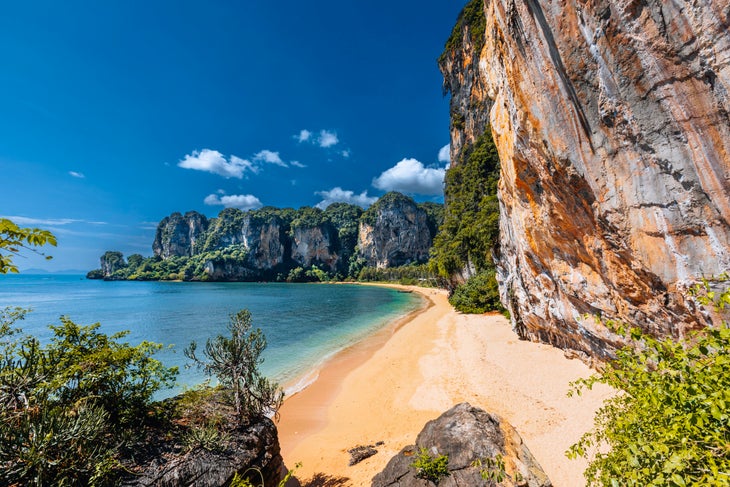
The area (peninsula and nearby islands) has been an international sport-climbing destination since the 1990s, and today there are hundreds of climbs from 5.8 to 5.14, ranging from short, powerful single-pitch routes to multi-pitch clip-ups. Over the years, its popularity has led to overuse issues (both on the rock and in terms of local infrastructure), and the already-slippery rock has gotten more polished, but Tonsai is still the OG beachside climbing area and remains popular for good reason. Plus, where else on Earth will your belayer’s unwanted beta spray be drowned out by the screeching of monkeys?
Virgin Gorda, British Virgin Islands
I remember seeing a Boreal shoe ad back in the 1980s of the late California climbing icon John Bachar walking toward a granite egg on the white sands of Virgin Gorda, rock shoes slung over his shoulder. The photo looked too good to be true—perfect granite boulders with sandy landings in the Caribbean?!—but it turns out that Virgin Gorda is the real deal, with jumbled boulders aplenty all along the southern tip of the island.
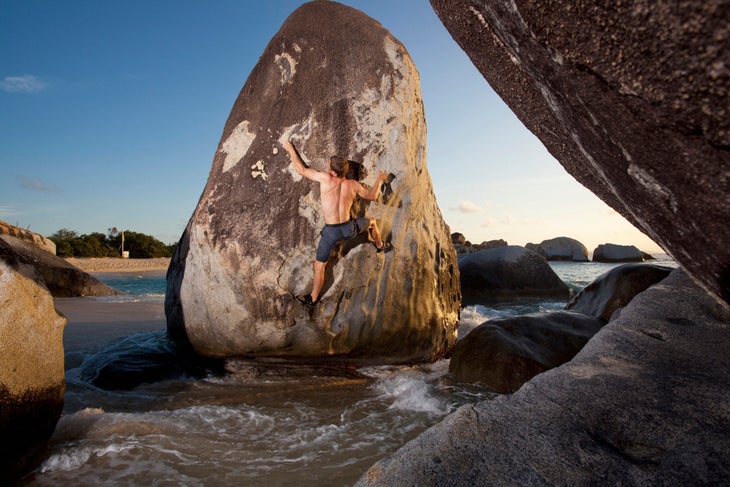
Many of the boulders are reminiscent of classic California granite, with cracks, patina crimps, white and black rock, and clean panels and faces. But you’ll also find crazy features created by sea weathering, including tafoni huecos and pocket bands, crazy tufa-pinches and blobs, hourglass threads, and bizarre rounded arêtes. The landings range from perfect (sand) to sketchy (boulders), so travel there with as many crashpads as you can.
Matt Samet is a freelance writer and editor based in Boulder, Colorado. He is the author of the Climbing Dictionary and the memoir Death Grip.
The post The 10 Best Beachside Climbing Destinations appeared first on Climbing.

